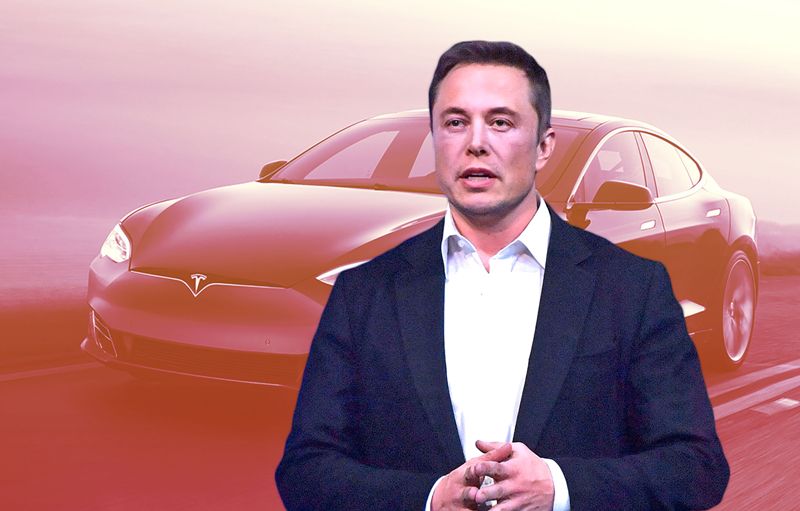Tesla, the world’s most valuable automaker, has announced plans to launch a new electric vehicle (EV) aimed at the mass market and competing with lower-cost rivals. The new model, codenamed “Redwood,” is expected to be a compact crossover that will go into production in mid-2025, according to sources familiar with the matter.
Tesla CEO Elon Musk confirmed on a post-earnings call on Wednesday that the company plans to begin producing its next-generation EV at its Texas factory in the second half of 2025. That will be followed by Mexico and another factory outside North America, to be determined later this year, he said, noting that ramping up production of the new vehicle would be difficult.
Musk has long piqued fans’ and investors’ interest in affordable electric vehicles and self-driving robotaxis, which are expected to be built on next-generation, cheaper electric car platforms. These models, including an entry-level $25,000 car, would enable it to compete with less expensive gasoline-powered vehicles and an increasing number of low-cost EVs, such as those manufactured by China’s BYD. BYD surpassed Tesla as the world’s largest EV maker in the fourth quarter of 2023.
Tesla announced on Wednesday that its next-generation vehicle would usher in a new era of growth. Tesla stated in its quarterly earnings report that our car volume growth rate in 2024 may be significantly lower than that achieved in 2023, as our teams are preparing for the launching of the future vehicle at Gigafactory Texas.
Musk had previously pledged to construct a $25,000 automobile in 2020, which he later postponed and then relaunched.
The Model 3 sedan, Tesla’s most affordable offering, currently starts at $38,990 in the United States. Last year, Musk expressed concern about the impact of high interest rates on consumer demand for large-ticket items such as cars.
Last year, Tesla sent “requests for quotes,” or invitations for bids, to suppliers for the “Redwood” model, with a weekly production volume forecast of 10,000 vehicles, according to two sources. Three sources said production would begin in June 2025. Everyone spoke on the condition of anonymity because the matter is private.
One of the most popular questions from investors to Tesla ahead of its quarterly results report on Wednesday afternoon was the timing of next-generation compact vehicle deliveries, which are expected to rise by 21% in 2024, well below Musk’s long-term annual target of 50% set three years ago.
Musk announced in May that Tesla was developing two new products with a combined sales potential of 5 million vehicles per year.
At Tesla’s annual shareholder meeting, he remarked that the product design and manufacturing procedures are far superior to anything else in the business.
According to Walter Isaacson’s biography of Musk, which was published in September and contains interviews with the CEO and executives, Tesla plans to construct a low-cost robotaxi as well as an entry-level $25,000 electric car utilizing the same vehicle architecture. Musk predicted in 2022 that Tesla will develop a specialized self-driving cab with a futuristic design by 2024, despite multiple missed deadlines for full self-driving capability. Last March, he and other Tesla officials revealed ambitions to reduce the cost of the company’s next-generation vehicles by half, but no timetable for their arrival was specified.
Tesla’s challenges and opportunities
Since Tesla has a track record of missing launch and price objectives, it will take some time to increase volume. For instance, the manufacturing of cybertrucks, which have a starting price of $60,990 in the US, is 50% more than what Musk expected in 2019 but has been delayed and sluggish to accelerate. One of the reports states that volume output will probably start in 2026.
On Wednesday, Musk said, “I’m generally optimistic about time.” But according to our present plan, we’ll start producing by the end of 2025, meaning that “we’ll be sleeping on the line practically.”
Tesla’s “Redwood” project is a bold and ambitious attempt to enter the mass market and challenge its competitors. The new model has the potential to be a more affordable, faster, and smarter alternative to traditional automobiles, paving the way for a sustainable, clean-energy future. However, Tesla will face numerous challenges and uncertainties in its efforts to deliver its next-generation EV, including supply chain issues, regulatory hurdles, technological glitches, and consumer preferences. Tesla will need to demonstrate that it can carry out its vision and keep its promises while maintaining its innovation and quality standards.
Tesla will struggle to profit from its lower-cost EVs due to battery costs and the challenges of producing high-quality low-cost vehicles. Two sources claim that Tesla has been looking into methods to reduce expenses by breaking down a Honda Civic, which retails for $23,950 in the US. Two sources, one of which was the source, claim that Tesla’s next-generation architecture, code-named “NV9X,” will be available in at least two models.
According to earlier reports, Tesla also intends to build more affordable cars at its Berlin facility and is investigating the idea of opening a factory in India to create more reasonably priced electric vehicles. Further Tesla factories are located in Shanghai and Fremont, California.






